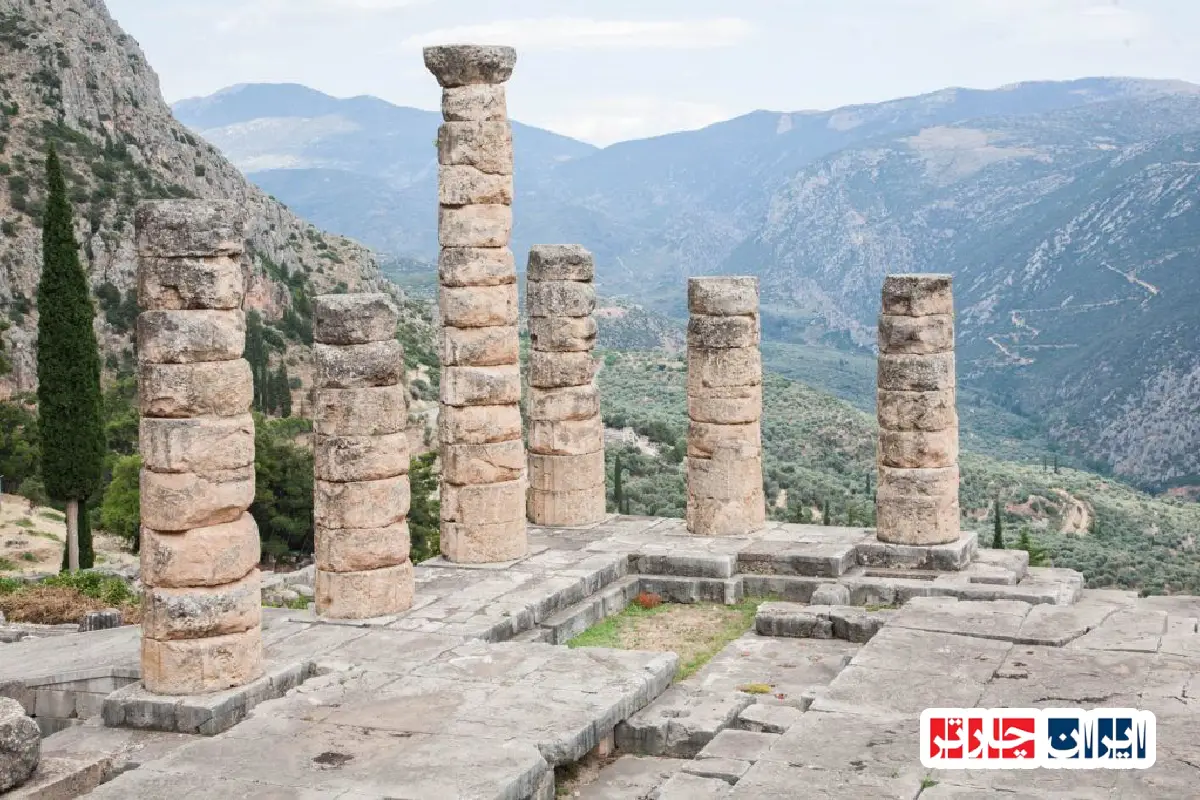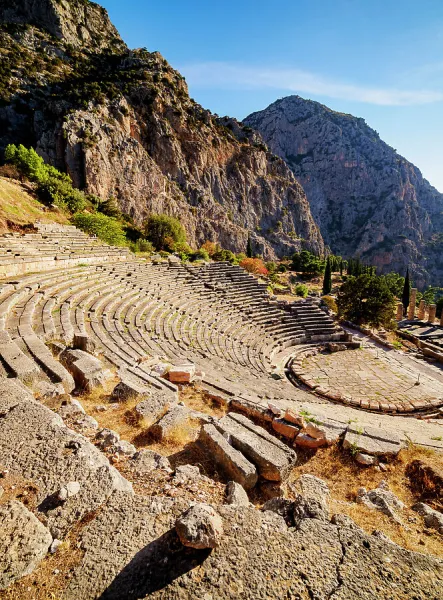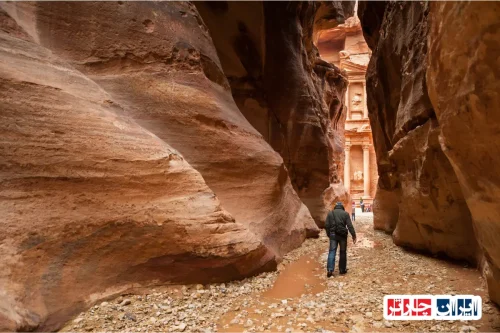Discover the Rich History and Architectural Marvels of Delphi Ruins in Phocis, Greece
Delphi Ruins in Phocis, Greece, stand as a testament to ancient Greek civilization, showcasing remarkable architecture, profound historical significance, and legendary cultural heritage. Located in the scenic region of Phocis, these ruins attract countless visitors eager to explore the remnants of a once-thriving religious and cultural center. The site includes iconic structures such as the Temple of Apollo, the ancient theater, and the treasury buildings, each reflecting the advanced engineering and artistic skills of ancient Greek architects. As a hub of prophecy and divine consultation, Delphi played a pivotal role in shaping Greek history and mythology. Today, the ruins continue to inspire scholars, historians, and travelers alike, offering a glimpse into a glorious past that has influenced art, literature, and spiritual practices across centuries. Visiting Delphi Ruins in Phocis, Greece, provides an unforgettable journey through time, revealing the enduring legacy of ancient Greece’s spiritual and architectural achievements. For those interested in exploring this extraordinary archaeological site, detailed guides and resources are available at Delphi Ruins-Iran Charter, ensuring a comprehensive understanding of its historical context and significance.
Discover the Rich History and Mythology Behind the Delphi Ruins in Phocis Greece
The Delphi Ruins in Phocis Greece stand as a testament to ancient Greek civilization, steeped in legends and historical significance. This sacred site was once the heart of the Greek world, where myths about gods, heroes, and divine prophecies intertwined with real historical events. Visitors can explore the remnants of the Temple of Apollo, the legendary oracle, and the surrounding archaeological complex that narrate stories of divine intervention and human achievement. The mythology of Delphi, including tales of Apollo slaying Python and the origins of the Pythian Games, enriches the cultural tapestry of this ancient site. Understanding these legends provides insight into the spiritual and societal values of ancient Greece, making Delphi a must-visit destination for history enthusiasts and myth lovers alike.
Architectural Marvels and Ancient Structures in the Delphi Archaeological Site
The Delphi Ruins showcase impressive architectural feats characteristic of classical Greece. The Temple of Apollo, with its iconic Doric columns, exemplifies ancient Greek engineering and aesthetic principles. Beyond the temple, the site features well-preserved structures such as the theater, treasuries, and the stadium, each reflecting sophisticated construction techniques and artistic craftsmanship. The theater, capable of hosting thousands, reveals the importance of cultural events in ancient Greek society. The treasuries, built by various city-states, highlight the political and economic influence of Delphi as a pan-Hellenic religious center. The meticulous stonework, decorative sculptures, and layout of these structures demonstrate the advanced architectural skills of ancient builders, offering a glimpse into their religious and social life.
Key Archaeological Finds and Remnants at the Delphi Site
The Temple of Apollo
The centerpiece of Delphi, the Temple of Apollo, features majestic Doric columns and a spacious interior that once housed the oracle. Its ruins reveal the grandeur of Greek temple architecture and religious practices. The remains include parts of the cella and the platform, illustrating the scale and design of sacred structures.
The Treasuries and the Theater
Multiple treasuries built by different Greek city-states stand as symbols of their devotion and rivalry. These structures stored offerings and valuables, emphasizing Delphi’s role in regional politics. The ancient theater, with its semi-circular seating, was used for dramatic performances and religious festivals, reflecting the cultural vibrancy of the site.
The Sacred Spring and Defensive Walls
The Castalian Spring, a vital water source, played a role in purification rituals and offerings. The surrounding defensive walls protected the site from invasions, showcasing strategic planning and engineering. These remnants highlight the site’s spiritual significance and its importance as a fortified sanctuary.
The Significance of the Temple of Apollo in Ancient Greek Culture
The Temple of Apollo at Delphi was more than a religious structure; it was the spiritual hub of Greece. As the home of the famous oracle, it served as a place where leaders and individuals sought divine guidance on political, military, and personal matters. The temple’s role in shaping Greek history underscores its influence on decision-making and societal cohesion. Religious festivals, including the Pythian Games, were held here, fostering unity among Greek city-states. The temple’s architecture and inscriptions reflect the devotion and artistic expression of the ancient Greeks. Today, the ruins symbolize Greece’s rich spiritual heritage and continue to inspire awe and scholarly research.
Living Traditions and Rituals in the Delphi Archaeological Complex
The Delphi site was a vibrant center of religious activity, where rituals, offerings, and festivals took place regularly. The process of consulting the oracle involved complex ceremonies, including purification rites at the Castalian Spring and offerings to the gods. The Pythian Games, akin to the Olympics, celebrated athletic prowess and religious devotion, drawing participants from across Greece. These traditions fostered a sense of shared identity and cultural pride among the Greek city-states. The site also hosted musical and theatrical performances, emphasizing the importance of arts in religious observance. Today, archaeological excavations reveal artifacts and remnants that shed light on these ancient customs, allowing visitors to connect with the spiritual life of the past.
Hidden Corners and Lesser-Known Aspects of the Delphi Ruins
Secret Temples and Sacred Spaces
Beyond the main structures, Delphi hides smaller temples and sacred areas that played crucial roles in local worship practices. These lesser-known sites include the Tholos of Athena and various altars used for specific rituals. Exploring these hidden corners offers a deeper understanding of the complex religious landscape of Delphi.
Undiscovered Artifacts and Puzzles
Ongoing excavations continue to uncover artifacts such as inscriptions, sculptures, and ritual objects, providing new insights into ancient Greek religion and daily life. These discoveries often challenge previous assumptions and open new research avenues.

Conservation Challenges and Preservation Efforts
Protecting Delphi’s fragile ruins from natural decay, pollution, and tourism impact is a continuous challenge. Conservation projects aim to stabilize structures, restore damaged areas, and promote sustainable tourism. Preserving these archaeological treasures ensures that future generations can appreciate Greece’s ancient heritage.
The Global Impact of the Delphi Ruins on Art and Literature
The influence of Delphi extends far beyond Greece, inspiring countless works of art, literature, and philosophy. The site symbolizes divine inspiration and human achievement, inspiring Renaissance artists and modern writers alike. The myth of Apollo and the oracle has been depicted in sculptures, paintings, and literary classics, emphasizing its universal appeal. The spiritual aura of Delphi continues to influence contemporary culture, serving as a symbol of wisdom and cultural unity. Museums worldwide display artifacts from Delphi, highlighting its importance as a cultural and artistic beacon. This enduring legacy underscores the site’s role in shaping global perceptions of ancient Greece and its contributions to human civilization.
Practical Tips for Visiting the Delphi Ruins and Making the Most of Your Trip
To enjoy a memorable visit to Delphi, plan your trip during spring or early autumn when the weather is mild. Wear comfortable shoes suitable for walking on uneven terrain and bring sun protection. Guided tours can enrich your experience by providing historical context and pointing out hidden details. Allocate enough time to explore the main archaeological sites, including the temple, theater, and treasuries, as well as the surrounding landscape with panoramic views. Respect the preservation rules to help maintain the site’s integrity. Don’t forget to visit the nearby museum to see artifacts and learn more about Delphi’s history. Engaging with local guides and reading about the mythology and history beforehand will deepen your appreciation of this UNESCO World Heritage site.
Exciting Discoveries and the Ongoing Archaeological Research at Delphi
The history of Delphi continues to unfold through ongoing excavations and research. Recent discoveries include new inscriptions, ancient tools, and parts of previously unknown structures, shedding light on daily life and religious practices. Advanced technologies like 3D scanning and ground-penetrating radar help archaeologists locate hidden remains without damaging the site. These discoveries often rewrite parts of Delphi’s history, revealing connections with other ancient Greek sites. The dedication of archaeologists and researchers ensures that Delphi remains a vital source of knowledge about ancient Greece. Visitors and scholars alike benefit from these ongoing efforts, which preserve and expand our understanding of this legendary site.
Challenges and Opportunities in Preserving the Delphi Heritage for Future Generations
Maintaining the integrity of the Delphi Ruins involves tackling natural erosion, pollution, and the impact of tourism. Implementing modern conservation techniques and limiting visitor numbers during sensitive periods are essential strategies. International cooperation and funding support preservation projects, ensuring that the site remains intact. Educational programs raise awareness about the importance of protecting this cultural treasure. Developing sustainable tourism practices can balance visitor access with conservation needs. Embracing digital documentation and virtual tours also help share Delphi’s beauty globally while reducing physical wear. Preserving Delphi’s archaeological and cultural legacy is a shared responsibility that guarantees future generations will continue to marvel at Greece’s ancient achievements.

FAQ about the Delphi Ruins in Phocis Greece
- What is the historical significance of the Delphi Ruins?
- The Delphi Ruins represent the spiritual and cultural heart of ancient Greece, serving as a center for prophecy, religious festivals, and political gatherings. It was home to the famous Oracle of Delphi and played a key role in shaping Greek history and mythology.
- What are the main architectural features of the Delphi archaeological site?
- The site showcases impressive structures such as the Temple of Apollo with its iconic Doric columns, the ancient theater, treasuries built by various city-states, and the stadium. These structures highlight the advanced engineering and artistic skills of ancient Greek builders.
- What are some key archaeological discoveries at Delphi?
- Major finds include the remains of the Temple of Apollo, numerous treasuries, the theater, the sacred spring, and various artifacts like inscriptions and sculptures. These remnants provide insights into religious practices and daily life in ancient Greece.
- Why was the Temple of Apollo important in Greek culture?
- The temple was the spiritual hub where the Oracle of Delphi delivered prophecies. It influenced political decisions, military campaigns, and social cohesion among Greek city-states, symbolizing divine guidance and unity.
- What rituals and traditions were practiced at Delphi?
- Rituals included purification at the Castalian Spring, offerings to the gods, and participation in the Pythian Games. These ceremonies fostered religious devotion and communal identity among the Greeks.
- Are there lesser-known areas or hidden parts of Delphi?
- Yes, beyond the main structures, there are smaller temples, altars, and sacred spaces like the Tholos of Athena. Ongoing excavations also uncover artifacts and structures that deepen our understanding of Delphi’s religious landscape.
- What challenges do archaeologists face in preserving Delphi?
- Preservation efforts combat natural erosion, pollution, and tourism impact. Conservation projects aim to stabilize structures, restore damaged areas, and promote sustainable tourism to protect this UNESCO World Heritage site.
- How has Delphi influenced art and literature worldwide?
- Delphi has inspired countless artworks, sculptures, and literary works, symbolizing divine inspiration and human achievement. Its mythologies and artifacts continue to influence modern culture and artistic expression globally.
- What are some practical tips for visiting Delphi?
- Visit during spring or early autumn for pleasant weather, wear comfortable shoes, and consider guided tours for richer context. Don’t miss the nearby museum, and respect preservation rules during your exploration.
- What recent discoveries have been made at Delphi?
- Recent excavations have uncovered new inscriptions, artifacts, and parts of previously unknown structures, thanks to advanced technologies like ground-penetrating radar, which help reveal more about Delphi’s past.
- How is Delphi being preserved for future generations?
- Efforts include structural stabilization, limiting visitor access during sensitive periods, digital documentation, and international cooperation. These initiatives aim to ensure the site’s longevity and accessibility for future visitors.
- What role did the Pythian Games play in ancient Greece?
- The Pythian Games, held at Delphi, were athletic and cultural festivals similar to the Olympics, promoting unity among Greek city-states and honoring Apollo through competitions in music, poetry, and sports.
- How does the mythology of Delphi reflect ancient Greek values?
- The myths, such as Apollo slaying Python, emphasize themes of divine power, heroism, and the importance of prophecy. These stories reveal societal values like reverence for gods, the pursuit of knowledge, and the celebration of human achievement.
- What is the significance of the sacred spring at Delphi?
- The Castalian Spring was used for purification rituals before consulting the oracle. It symbolized spiritual cleansing and was an essential part of the religious ceremonies at Delphi.
























